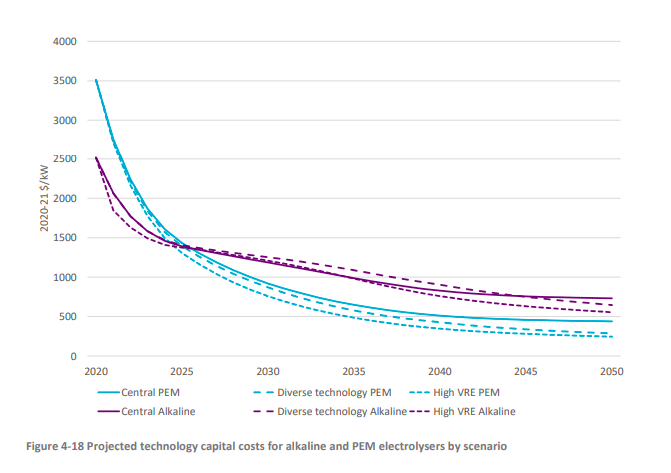Green Energy: CSIRO sees electrolyser, battery build costs tumble
Energy
Falling costs of battery storage and electrolysers could underpin the long-term shift to renewables in Australia, according to the CSIRO and AEMO.
The final version of the 2020-21 GenCost report has been released this week, indicating solar and wind remain the cheapest electricity sources available.
But battery storage costs fell the most in 2020-21, and are projected to come down further depending on the level of policy support across the country.
The report comes as new figures showed the share of Australia’s energy generation coming from renewables ticked to their highest level in the March Quarter, up to 28% of the national market.
For the first time the GenCost report has also included projections for hydrogen electrolysers.
Report authors project the build costs for alkaline electrolysers and proton-exchange membrane alkalysers could fall from $2,516 and $3,510 per kW in 2020 to $732 and $441/kw respectively by 2050 under a less ambitious carbon policy.
At the more ambitious end of policy direction here and abroad that could fall as low as $555 and $245/kw with a high rate of take up.

“Electrolyser deployment is being supported by a substantial number of hydrogen supply and enduse trials globally and in Australia,” the report said.
“Experience with other emerging technologies indicates that this type of globally coincident technology deployment activity can lead to a scale-up in manufacturing which supports cost reductions through economies of scale. Very low costs, at the bottom end of the projections here, have been reported in China.”
“However, differences in engineering and operating and maintenance costs mean these are not able to be immediately replicated in other regions. They do indicate, however, a likely achievable level for other regions over the longer term.”
It should be noted there are caveats to these projections.
The High VRE projections are based on “a world that is driving towards net zero emission by 2050, and where technical, social and political support for variable renewable generation is high”, the report said.
Of course this policy setting doesn’t exactly describe the current Australian political landscape.
Energy Minister Angus Taylor take us away.
Where access to wind and solar is constrained, power generation “from gas, with carbon capture and storage, fills the gap and is also used more commonly in hydrogen production,” the report authors noted.